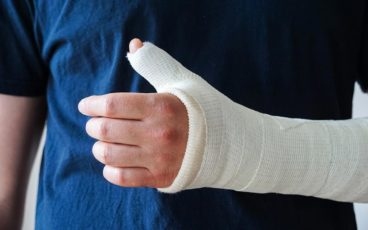Trigger Finger Disease Isn’t What Clint Eastwood Thinks It Is
Stenosing tenosynovitis is the medical name of a fairly common condition that is widely known as trigger finger. This condition causes one or more fingers to get locked into a curled position and suddenly release, almost snapping back. Its name derives from its similarity to the motion of a shooters finger when they pull the trigger of a gun. In the worst cases of trigger finger the finger can get stuck in a curl and not straighten out. Despite some similarities, trigger finger is not related to Dupuytren’s contracture.
Symptoms Of Trigger Finger (They Aren’t Usually Itchy)
The symptoms of stenosing tenosynovitis can vary widely from almost non-existent to very severe. In many cases the severity progresses, becoming more and more severe as time goes on. The symptoms of trigger finger are:
- A finger stuck in a curled, or bent, position
- Occasionally the finger gets stuck and locked into a curl
- May involve one finger, multiple fingers, and both hands
- Usually occurs on the thumb, ring, and middle fingers
- A finger that makes a click or pop when moved
- Mornings tend to be the worst for stiffness
- A bump near the hand that may be tender
- Grabbing an object may cause the finger to get stuck
- An inflammation in the joint on the affected finger
Got A Finger Like Billy The Kid’s? Here’s Why.
This disease is caused when a tenosynovium, a protective coat on a tendon, is inflamed causing the tendon to become stuck and unable to move inside the tenosynovium. This is similar to a piston getting stuck in the cylinder of an overheated engine. As the tendon gets stuck, and then suddenly releases, it causes the inflammation to get worse making the symptoms more sever. In general, trigger finger is more common in women and people with rheumatoid arthritis, hyperthyroidism, and diabetes. The most usual cause is the repeated grasping of an object, like a construction worker holding a hammer or a musician playing a guitar.
Blow Away Your Painful Trigger Finger
There are multiple treatments for trigger finger that don’t involve becoming a competitive target shooter or trying out for the remake of Dirty Hairy. In the least severe cases a doctor may prescribe physical therapy and up to six weeks of splinting, which keeps the finger straight and extended. In cases where the symptoms are particularly severe the orthopedic physician may prescribe over the counter non-steroidal anti-inflammatory drugs or corticosteroid injections. When the trigger finger is locked into place, an orthopedist may perform a percutaneous trigger finger release, which is when a needle is used to cause the finger to straighten out. The last resort is a surgical procedure on the hand to release the tendon and repair any long term damage done to the tendon or tenosynovium.
Over time an untreated, or mistreated, trigger finger can get much worse and even cause internal damage. If you are experiencing what you think may be trigger finger you need to see an orthopedic physician to ensure your treatment will alleviate the problems as much as possible. The hand and wrist specialists at the Illinois Bone and Joint Institute can make you feel less like Wyatt Earp and more like you old self. Make an appointment today and learn why IBJI is your best choice for orthopedic care.
*This content is for information only and is not intended to replace the diagnosis, treatment, or medical advice from your treating healthcare professionals. The content does not provide medical advice, does not constitute the practice of medicine or other healthcare professional services, and does not create a doctor-patient relationship. You should not rely on this information as a substitute, nor does it replace professional medical advice, diagnosis, or treatment. If you have concerns or questions, seek the advice of your healthcare professionals. If you think you may have a medical emergency, call your doctor or 911 immediately. Do not rely on electronic communications or communicate through this website for immediate, urgent medical needs. This website is not designed to facilitate medical emergencies. The use of the information is at the reader’s own risk. The links are provided for information and convenience only. We cannot accept responsibility for the sites linked or the information found here. A link does not imply an endorsement of a site.




